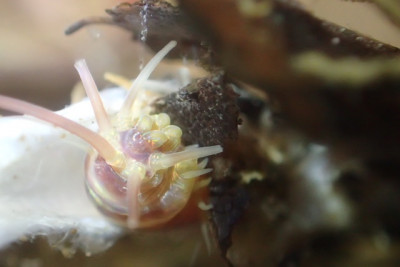2022-11-07 カリフォルニア大学サンタバーバラ校(UCSB)
1つは常に光合成をしなければならない個体群、もう1つはある状況下でしか光合成をしない個体群で実験した。それぞれの個体群を、2つの光量レベルと3つの温度体制に分けた。研究者たちは、実験期間中、定期的に対照群(24℃で進化)と各実験群を比較した。対照群を実験条件下に置くと、その条件下に置かれ続けた実験群と比較して、どのような結果が得られたかを記録した。このデータをもとに、研究者たちは実験期間中にさまざまな集団がどのように変化していくかを見極めることができた。
研究者らは、特に光合成を常に行っている株から、温度が高くなると異所栄養が全般的に増加することに気づいた。
このことは、気候危機によって、混合栄養生物が地球上の炭素循環に果たす役割が変化する可能性を示唆している。混合栄養生物は、特に栄養分の乏しい外洋のプランクトンでは、これまで科学者が認識していたよりも一般的な存在である。混合栄養生物が従属栄養型にシフトすれば、より多くのCO2を生産し、気候変動に寄与することになる。その結果、気温がさらに上昇し、栄養の乏しい海域が拡大し、フィードバック・ループが生じる可能性があるのだ。
<関連情報>
- https://www.news.ucsb.edu/2022/020763/mixing-metabolism
- https://onlinelibrary.wiley.com/doi/full/10.1111/gcb.16431
混合栄養ナノ鞭毛藻の温暖化に対する進化的適応の証拠 Evidence for evolutionary adaptation of mixotrophic nanoflagellates to warmer temperatures
Michelle Lepori-Bui,Christopher Paight,Ean Eberhard,Conner M. Mertz,Holly V. Moeller
Global Change Biology Published: 15 September 2022
DOi:https://doi.org/10.1111/gcb.16431

Abstract
Mixotrophs, organisms that combine photosynthesis and heterotrophy to gain energy, play an important role in global biogeochemical cycles. Metabolic theory predicts that mixotrophs will become more heterotrophic with rising temperatures, potentially creating a positive feedback loop that accelerates carbon dioxide accumulation in the atmosphere. Studies testing this theory have focused on phenotypically plastic (short-term, non-evolutionary) thermal responses of mixotrophs. However, as small organisms with short generation times and large population sizes, mixotrophs may rapidly evolve in response to climate change. Here, we present data from a 3-year experiment quantifying the evolutionary response of two mixotrophic nanoflagellates to temperature. We found evidence for adaptive evolution (increased growth rates in evolved relative to acclimated lineages) in the obligately phototrophic strain, but not in the facultative phototroph. All lineages showed trends of increased carbon use efficiency, flattening of thermal reaction norms, and a return to homeostatic gene expression. Generally, mixotrophs evolved reduced photosynthesis and higher grazing with increased temperatures, suggesting that evolution may act to exacerbate mixotrophs’ effects on global carbon cycling.


